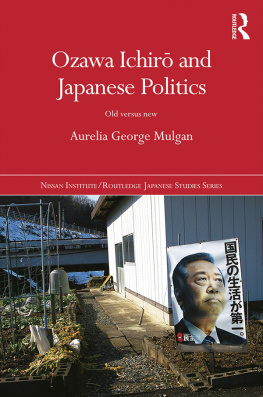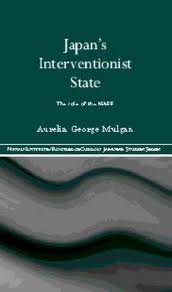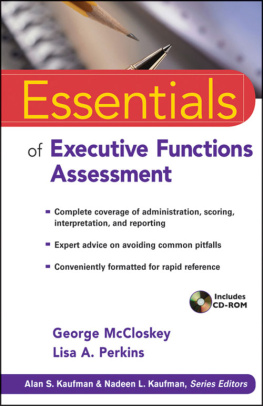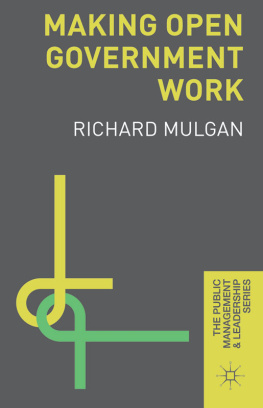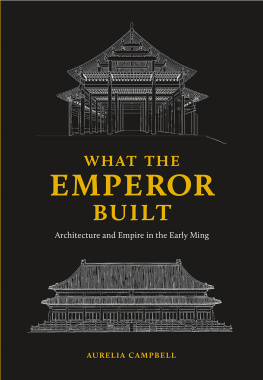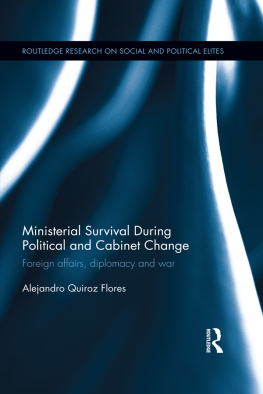The Abe Administration and the Rise of the Prime Ministerial Executive
With the advent of the second Abe administration, the question of who leads in Japan has become much easier to answer the prime minister and his executive office, backed by a substantial policy support apparatus. The rise of the prime ministerial executive is one of the most important structural changes in Japans political system in the post-war period.
This book explains how the prime ministerial executive operates under the Abe administration and how it is contributing to Abes unprecedented policymaking power. The book analyses how reform of central government under Prime Ministers Nakasone, Hashimoto and Koizumi produced the necessary institutional innovations to allow the prime minister to assert more authoritative policy leadership, turning Japans traditional, decentralised and bottom-up policy process on its head. Comparing the Westminster and presidential models of governance and applying them to Japans contemporary politics, the book shows that, whilst elements of both can be found, neither captures the essence of the transformation involved in the rise of the prime ministerial executive.
Providing a thorough analysis of power relations in Japanese politics, this book will be useful to students and scholars of Japanese Politics, Comparative Politics and Asian Studies.
Aurelia George Mulgan is Professor in the School of Humanities and Social Sciences at University of New South Wales, Canberra, Australia. Her publications include Ozawa Ichir and Japanese Politics: Old Versus New (Routledge, 2014).
Routledge Focus on Asia
1 The Abe Administration and the Rise of the Prime Ministerial Executive
Aurelia George Mulgan
First published 2018
by Routledge
2 Park Square, Milton Park, Abingdon, Oxon OX14 4RN
and by Routledge
711 Third Avenue, New York, NY 10017
Routledge is an imprint of the Taylor & Francis Group, an informa business
2018 Aurelia George Mulgan
The right of Aurelia George Mulgan to be identified as author of this work has been asserted by her in accordance with sections 77 and 78 of the Copyright, Designs and Patents Act 1988.
All rights reserved. No part of this book may be reprinted or reproduced or utilised in any form or by any electronic, mechanical, or other means, now known or hereafter invented, including photocopying and recording, or in any information storage or retrieval system, without permission in writing from the publishers.
Trademark notice: Product or corporate names may be trademarks or registered trademarks, and are used only for identification and explanation without intent to infringe.
British Library Cataloguing-in-Publication Data
A catalogue record for this book is available from the British Library
Library of Congress Cataloging-in-Publication Data
Names: Mulgan, Aurelia George, author.
Title: The Abe administration and the rise of the prime ministerial
executive / Aurelia George Mulgan.
Description: Abingdon, Oxon ; New York, NY : Routledge, 2018. | Series:
Routledge focus on Asia ; 1 | Includes bibliographical references and
index.
Identifiers: LCCN 2017017995 | ISBN 9781138105874 (hardback) |
ISBN 9781315101736 (ebook)
Subjects: LCSH: Executive powerJapan. | Abe, Shinzo, 1954 |
JapanPolitics and government21st century.
Classification: LCC JQ1640 .M85 2018 | DDC 952.05/12dc23
LC record available at https://lccn.loc.gov/2017017995
ISBN: 978-1-138-10587-4 (hbk)
ISBN: 978-1-315-10173-6 (ebk)
Typeset in Times New Roman
by Apex CoVantage, LLC
I would like to acknowledge the continuing support of the Australian Research Council (ARC) Discovery Projects scheme, which has assisted my research with successive grants over a number of years. Without this funding, the book could not have been written. I am also greatly indebted to my research assistant, Yong Suk Koh, whose skills and dedication have contributed so much to this work. My husband, Richard Mulgan, as ever, has provided wise counsel and an index, both indispensable contributions to the book. To Brian Woodall, whose work remains an inspiration, I express my gratitude for being such a good academic mate and offering such insightful guidance on the manuscript. My thanks also to the anonymous reviewer for reading and commenting on the manuscript.
1
Introduction
Abe Shinz has embarked on a journey to become a great prime minister ( daisri ).
One of the most important factors contributing to the Abe administrations policy achievements is the mobilisation of an extensive infrastructure of prime minister-led policymaking. Former Liberal Democratic Party (LDP) heavyweight and now leader of the Peoples Life Party, Ozawa Ichir, first advocated such a comprehensive, strategic decision-making apparatus in his Blueprint for a New Japan more than two decades ago. This proposal has now come to fruition in the emergence of a so-called prime ministerial executive comprising the prime minister and his executive office (known as the Kantei), together with its policy and administrative support apparatus.
The rise of the prime ministerial executive in Japan represents the culmination of a series of systemic or institutional reforms ( seido kaikaku ). furnished the necessary ingredients for the rise of the prime ministerial executive. Other political reforms reinforced this process but would not have been sufficient without the critical input of central government reform, which provided the requisite institutional framework for prime minister-led policymaking. The structural changes to the policymaking process allowed successive prime ministers to develop new modes of policy leadership.
Prime Minister Abe has taken this process further than any of his predecessors by fully deploying, expanding and diversifying the apparatus of assistance and support for the exercise of prime ministerial authority, including both official and unofficial personnel arrangements within his executive office and by creating new entities to buttress his executive power. In this way, Abe has been able to mount a strong challenge to well-established political and administrative conventions operating within the central government.
The prime ministerial executive in the Abe administration
While the prime minister and his executive office are widely known as the Kantei, this also refers to the Kantei building, or Prime Ministers Official Residence, which houses the prime ministerial offices. In terms of personnel, the Kantei includes the prime minister, the chief cabinet secretary ( naikaku kanb chkan ), three (one administrative and two parliamentary) deputy chief cabinet secretaries ( naikaku kanb fukuchkan ), the prime ministers executive secretaries ( sri hishokan ) and special advisers ( sri hosakan ). These are the main personnel who work in the Kantei building. Support personnel are also referred to as Kantei staff and include special advisers to the cabinet ( naikaku kanb sanyo ) and three assistant chief cabinet secretaries ( naikaku kanb fukuchkan ho ).
Two important organisations that form the broader structure of assistance and support for the Kantei are the Cabinet Secretariat and the Cabinet Office, which share the same office building close to the Kantei. There is some overlap amongst all three bodies in terms of personnel, organisational composition and physical location. Cabinet Secretariat personnel who work most closely with the prime minister are located in the Kantei building, while the rest work in the Cabinet Office building, including the assistant chief cabinet secretaries. Special advisers to the cabinet have their offices in either the Kantei or the Cabinet Office depending on the special adviser. In addition to its own executives (chief cabinet secretary, deputy chief cabinet secretaries etc.), the Cabinet Secretariat has an array of organisational subunits such as offices ( shitsu ), secretariats ( jimukyoku ) and headquarters ( honbu ) and also includes the ministers in charge (of certain issues) ( tant daijin ).


